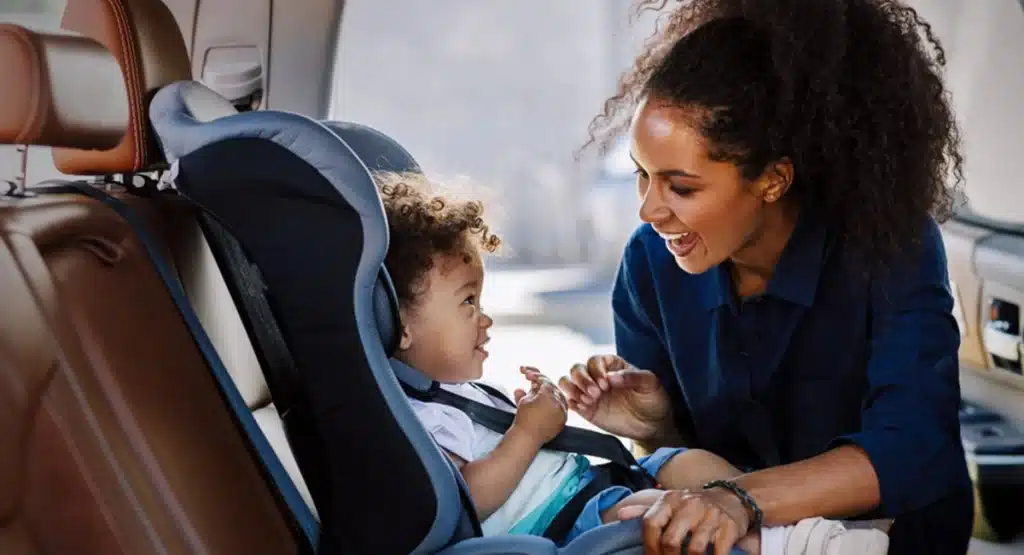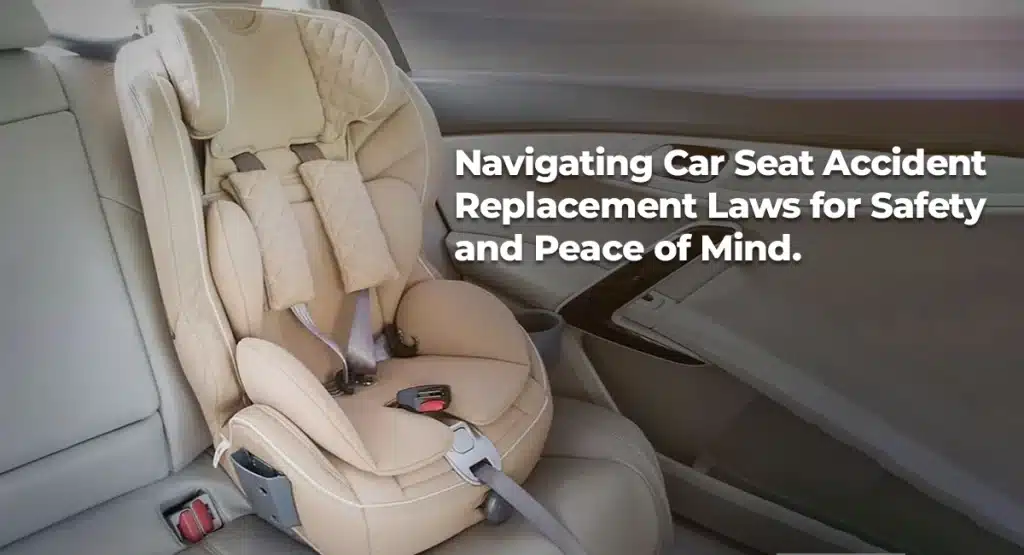In the United States, vehicular accidents are unfortunately common, leading to injuries and deaths. Surprisingly, deaths from vehicle collisions outnumber those from illnesses like cancer among Americans. Each year, around 43,000 major car crashes occur in the US. In 2021, about 700 children aged 12 and under lost their lives in car crashes. To reduce these numbers, many US states mandate the use of safety seats, seat belts, and airbags.
Car seats play a crucial role in reducing fatalities during accidents, with statistics showing that 83% of children under 4 years old from 2018 to 2022 avoided injury in car crashes. One common question we receive at our auto body shop is whether it’s necessary to replace car seats after a major or minor crash.
NHTSA on Car Seat Replacement
The NHTSA, part of the U.S. Department of Transportation, offers detailed guidance on selecting and using child car seats and booster seats. According to NHTSA, these seats significantly lower the risk of fatal injury: by 71% for infants and 54% for toddlers in passenger cars, and by 58% and 59%, respectively, in light trucks.
Should You Replace Your Car Seats After an Accident?
In general, it’s recommended to replace your car seats following a moderate or severe crash, even if there are no visible signs of damage. Safety should always come first, and it’s better to be cautious. Even if a car seat appears undamaged, there could be unseen stress or structural damage.
The National Highway Traffic Safety Administration (NHTSA) offers specific guidelines that require car seat replacement after an accident.
Is it Important to Replace Car Seats After an Accident?
Replacing car seats after an accident is crucial for child safety. Even in moderate or severe accidents, car seats can suffer damage that compromises their effectiveness, even if not visibly damaged. The internal components may be affected, impacting the state’s ability to absorb and redistribute force. To ensure optimal protection, it’s important to replace the car seat immediately after an accident, as part of the overall collision repair process.
Is it Necessary to Replace a Car Seat After a Minor Accident?
A minor car accident, according to NHTSA, meets the following criteria:
- The vehicle can be driven away from the crash site.
- The door nearest the car seat was not damaged.
- No passengers were injured.
- The airbags did not deploy.
- Never use a car seat that has been in a moderate to severe crash.
- Always follow the manufacturer’s instructions for car seat use.
- NHTSA changed its policy due to parents buying used car seats after accidents, which could result in using damaged seats.
- Even an empty car seat buckled into the vehicle can experience crash forces, potentially affecting its performance in another crash.
Who is accountable for covering the cost of replacing a car seat?
If you file an insurance claim after a car accident, the cost of replacing a damaged car seat should be covered. It’s important to document the accident by taking photos of any visible damage to the car seat. Additionally, record the car seat’s serial number and expiration date, usually found under the lining. Print out the manufacturer’s user guide page with after-crash replacement instructions. Provide a receipt, which should be available if you purchased it with a debit/credit card or check. Cut the car seat’s straps and take photos to ensure it cannot be used and must be discarded.
Car Seat Replacement Guidelines in Canada by Province

- Quebec: Children must use booster seats until they’re 9 years old.
- British Columbia: Infants up to 12 months old and weighing over 9 kg should use a rear car seat. They must use a car restraint until they reach 18 kg. Children under 9 years old need a booster seat.
- Ontario: Children should use rear car seats until they weigh 9 kg. Those between 18 kg and 36 kg must use booster seats.
- Alberta: Children under 2 years old need a rear-facing seat. They should use a forward-facing seat until they’re 18 kg or 6 years old, then a booster seat.
- Nova Scotia: Rear-facing seats are required until children are 10 kg and 1 year old, then a booster seat until they’re 9 years old.
- Manitoba and New Brunswick: Booster seats are necessary until children reach 36 kg or 9 years old.
- Prince Edward Island: Rear-facing seats are needed until children are 9 kg, and front-facing seats until they’re 18 kg.
- Newfoundland and Labrador: Rear-facing seats are required until children are 9 kg, front-facing seats until they’re 18 kg, and booster seats until they’re 9 years old.
- Saskatchewan: A car restraint is necessary until children reach 18 kg, and a booster seat until they’re 7 years old.
- Yukon: Rear-facing seats are needed until children are 10 kg, and booster seats until they’re 45 kg.
- Northwest Territories: Rear-facing seats are required until children are 9 kg.
Car seat replacement is mandatory in Canada to ensure child safety. Whether it’s a minor or severe accident, the car seat must be replaced before a child can ride in the car.
Car Seat Replacement After an Accident: Your FAQs Answered
1. Should I get my car seat replaced after a small collision?
The NHTSA advises changing your car seat following a moderate or serious collision, but their rules are a little looser for smaller collisions:
* There was no obvious damage to the car seat
* After the collision, the car could still be driven
* No passengers were hurt
* The airbags failed to deploy
It might be acceptable for you to keep the car seat if these points are true. But, especially for smaller kids, it’s always better to err on the side of caution and replace it.
2. If the car seat appears to be in good condition, why change it?
The car seat’s ability to protect your child in an accident down the road may be weakened by undetected internal damage that even slight collisions can cause.
3. In the event of an accident, who foots the bill for a new car seat?
The replacement cost may be paid if you file a claim for the accident with your auto insurance. To prove your purchase, gather proof of purchase documents such as receipts, serial numbers, and pictures of the damaged car seat.
4. How should I handle a car seat that is damaged?
Don’t sell it or give it away! Ensure it is rendered useless indefinitely. Before discarding it, cut the straps and take pictures as evidence.
5. Do Canadian laws require the replacement of car seats?
In Canada, replacing a car seat following an accident is not governed by federal law. There are, however, unique car seat usage laws for kids in every province.

